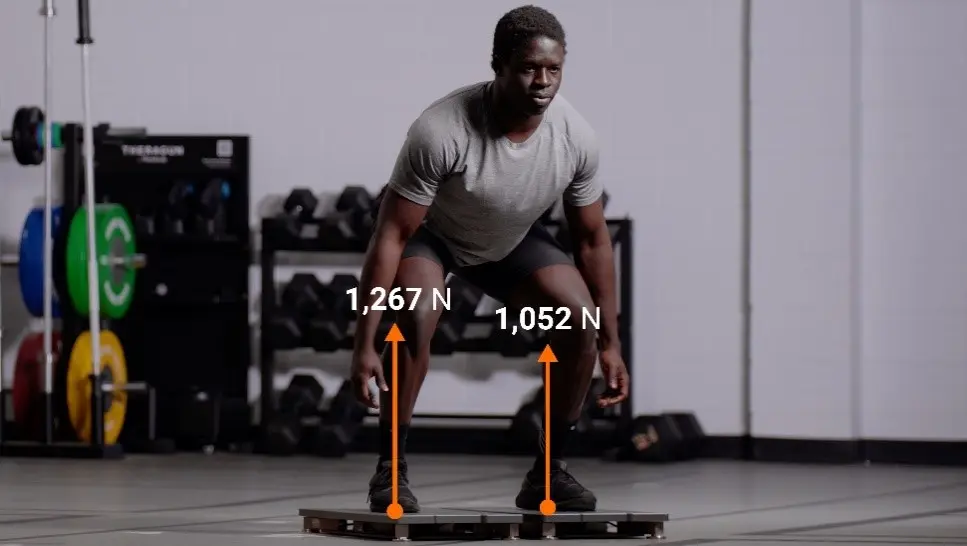Force plates are the most versatile and popular among the many digital biofeedback devices and equipment available to strength and conditioning coaches and athletic trainers. Force plates measure ground reaction forces (GRFs) and capture quantitative data about peak force, power, strength, jump height, fatigue, balance, limb symmetry, and more.

Force plates can either measure along a single axis or three axes. Single-axis force plates measure vertical force and 3-axis force plates measure anterior-posterior and medial-lateral movement in addition to vertical force. While single-axis, portable force plates are convenient and widely used, they cannot capture the breadth of data 3-axis force plates can.
Because of this, demand for 3-axis force plates is high among performance coaches and trainers who work with elite athletes, including those on professional, semi-pro and college sports teams. The sophisticated plates can be used to build comprehensive profiles of an athlete’s athleticism, abilities and deficiencies. That knowledge can be leveraged to refine training plans, rehabilitate athletes after injury, and optimize athletic performance.
Here’s an introduction to how coaches can use 3-axis force plates to train and rehabilitate golfers, football players, soccer players, and basketball players.
Golf
When a golfer swings, they transition pressure between their feet and shift their center of pressure (CoP). Understanding how a golfer shifts their pressure and weight forward, backward and laterally is key to improving the efficacy of their swing.
3-axis force plates accurately capture the direction, timing and magnitude of a golfer’s swing – and measure stability, consistency and dynamic balance. Those measurements can help coaches identify inefficiencies or asymmetries. That insight can be leveraged to help golfers enhance their swing mechanics.
Football
For coaches who work with football players, training to prevent injury is as important as training to improve performance. To play safely, players must be agile and balanced – and capable of moving with explosive horizontal power.
3-axis force plates can give coaches the granular data to analyze player performance and hone training plans. One simple way they can do this is by having athletes perform bilateral forward jump tests on the plates. Bilateral jump tests shed light on a player’s lower-limb power and neuromuscular coordination and control. The plates enhance the diagnostic power of the test by detecting asymmetries, monitoring for fatigue, and generating detailed force analyses and stability metrics. With that data, coaches can unearth inefficiencies – and have their players train to correct them.
Basketball
Lateral movement is prominent in basketball. In fact, players can spend up to one-third of each game performing lateral movements like shuffling, cutting and driving the ball to the basket.
Basketball players can perform lateral countermovement jump (LCMJ) and lateral jump (aka skater jump) tests on 3-axis force plates to gain insight into their lateral mobility and power. The tests give coaches insight into an athlete’s lateral force (including lateral acceleration and deceleration). Those insights can be used to tailor training plans to an athlete’s unique physicality and, ultimately, enhance efficiency and agility.
Soccer
Soccer players need to change direction and velocity quickly and must be agile. Change of direction (COD) testing – which can reveal critical information about an athlete’s contact times, angular velocities, joint angles, and GRFs – is key to assessing agility.
Coaches can use 3-axis plates to conduct COD testing. The tests provide coaches with metrics including:
- Lateral reactivity index
- Peak force
- Relative force
- Entry velocity
- Exit velocity
- Entry-exit impulse
- Total movement time
That data can be used to fine-tune performance training and rehabilitation plans – and, ultimately, drive better athletic results.
